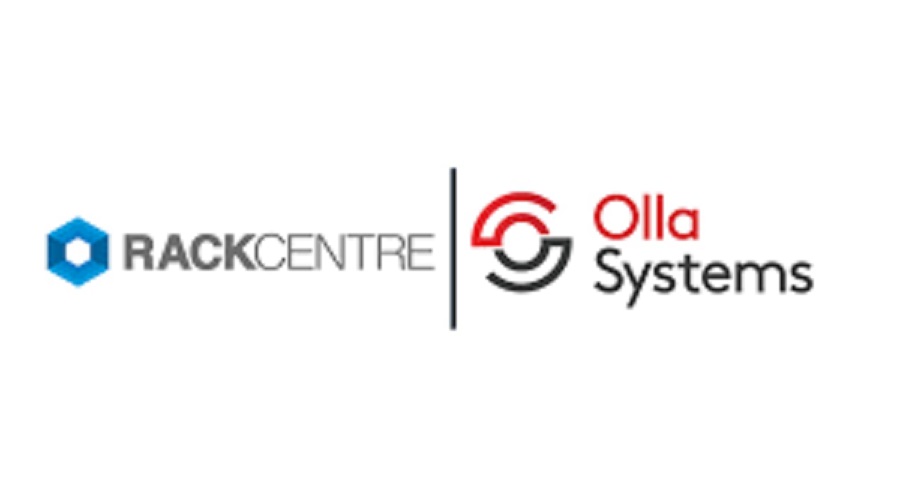E-Business
Join Inlaks Live TechTalk Edition on Hyosung’s Revolutionary MV 100 ATM Model

Inlaks, the leading Information Technology Systems Integrator specialised in the deployment of highly scalable ICT Infrastructure solutions, will on Monday September 28, deploy the second edition of its virtual thought leadership segment called “TechTalk”.

Techtalk which was formerly a pre-recorded segment hosted on the organisations YouTube channel has now transitioned into a live virtual event across Instagram, Facebook, Twitter and YouTube. The virtual edition kicked off in August 2020 with a segment on Financial Crime Mitigation, honing in on the superiority of Temenos Financial Crime Mitigation Solution with Emmanuel Orororo, Sales Manager, Financial Business, Inlaks.
The 2nd edition of Tech Talk promises to offer the same measure of insights as it dives into the world of Automated Teller Machines (ATM) with a focus on MoniValue 100, a revolutionary ATM solution by Hyosung TNS. The MoniValue 100 is especially adapted to the present times as it is a cardless, contactless and changeless solution.
Join this virtual event live by logging on to any of the social media pages below on Monday, 28th September 2020. YouTube: Inlaks, Facebook: InlaksNg, Twitter: Inlaks, Instagram: InlaksNg
Inlaks is a leading system integrator in Sub-Saharan Africa. The company partners with leading OEMs in the technology industry to provide world-class information technology solutions that exceed the needs of its customers.
Over the years, Inlaks has built a reputation as the foremost ICT and Infrastructure Solutions Provider, helping customers effectively seize new market and service opportunities.
With an impressive customer base that includes six Central Banks in West Africa, 18 of the 24 banks in Nigeria and other major customers in the West African region, Inlaks has become the dominant Information Technology Company in Africa.
Inlaks’ customers cut across various segments including Banking, Telecommunication, Oil/Gas, Power, Utilities and the Distribution sectors of the economy. For more information, please visit www.inlaks.com
E-Business
Visa to Establish Data Centre in Nigeria to ‘Boost Digital Economy’

Visa, global payment services giant, has announced plans to establish a data centre infrastructure in Nigeria.

Andrew Torre, Visa’s regional president for central and eastern Europe and Vice-President Kashim Shettima
According to a statement by Stanley Nkwocha, senior special assistant to the president on media and communications (office of the vice-president) on Friday, Andrew Torre, Visa’s regional president for central and eastern Europe, the Middle East, and Africa, spoke during a courtesy visit to Vice-President Kashim Shettima at the presidential villa in Abuja.
“This is in addition to its investments of over $1 billion in the country, including a substantial technological partnership with @moniepoint to foster digital payment solutions, a $200 million investment in Interswitch, and a partnership with @thriveagric to empower smallholder farmers and enhance food security in Nigeria,” the statement reads.
During the meeting, Torre said the plan to establish the data centre infrastructure aims to bring new technologies into the Nigerian market that would bolster the nation’s growing digital economy.
“Visa has been making investments and will continue to make these investments in Nigeria,” he said.
Responding, Shettima welcomed Visa’s expansion efforts, assuring the delegation that the partnership between Visa and the Nigerian government would continue to flourish.
The vice-president commended the company for investing in ThriveAgric, noting that President Bola Tinubu’s administration is deeply committed to repositioning the agriculture sector, which remains a top priority in its 8-point agenda.
“Nigeria is where the action is. Of the 10 fintechs in Africa, about eight are in Nigeria, with moniepoint as the newest addition,” Shettima said.
“Agriculture is key to the 8-point agenda of the present administration. President @officialABAT is really keen on repositioning the agriculture industry here, and we have to invest in technology, we have to invest in modernisation.”
On January 23, Moniepoint, a Nigerian fintech company, announced it secured investment from Visa to support the growth of small and medium enterprises (SMEs).
Andrew Torre, Visa’s regional president for central and eastern Europe and Vice-President Kashim Shettima
E-Business
FCTA Approves N242.8m for Microsoft 365 Licence to Digitise FCT-IRS

Federal Capital Territory Administration (FCTA) has approved N242.8m for the procurement of a Microsoft 365 licence for its Internal Revenue Service (FCT-IRS) as part of efforts to digitise the service’s operations.

Mr Michael Ango, acting executive chairman of FCT-IRS, disclosed this after the FCT Executive Committee meeting chaired by Mr Nyesom Wike, the minister of FCTA, in Abuja on Wednesday.
Ango said that the FCTA was making significant investments in technology to enhance revenue generation and collection.
“So, this is also one of those investments in technology that the FCT is undertaking.
“The licence, if procured, will enhance our ability to move most of our manual processes into automated processes.
“It will enhance our ability to communicate within our offices,” he said.
The executive chairman added that the move would also reduce the use of paper and ensure better record-keeping through the storage of information and documents in the cloud.
According to him, “The licence will essentially enhance our operations and assist us in generating revenue for the development of the FCT under Wike’s leadership.”
E-Business
Rack Centre Hosts Olla Systems’ Private Cloud Infrastructure

Rack Centre, West Africa’s Tier III Carrier and Cloud neutral data centre, has welcomed Olla Cloud Service, a new private cloud service by Olla Systems Limited, a leading provider of innovative technology solutions, to its facility.

Hosting at Rack Centre, Olla Cloud Service runs on a state-of-the-art, cloud-enabled infrastructure for enterprise applications across diverse platforms, including mission critical application, web applications as well as containerised applications using Kubernetes.
Lars Johannisson, CEO, Rack Centre, welcoming Olla Systems, noted that the partnership with Olla Systems Limited would reflect the company’s commitment to providing African businesses with high- quality cloud computing services.
He noted that Olla Systems would enjoy Rack Centre’s 13.5MW data centre campus facility, designed to meet the highest international standards and offering scalable solutions to Hyperscalers, Enterprises, and Cloud service providers.
As part of its commitment to sustainability, the facility is equipped with energy-efficient systems, advanced cooling technologies to mitigate environmental impact and an optimally-designed feature to handle high-density workloads with precision.
According to Johannisson, “With Olla Cloud Service hosting at Rack Centre, clients will experience fast performance and low latency, enabling businesses in Africa to access world-class cloud computing services within a secure and compliant local infrastructure.”
Also speaking, Olusola Adenuga, chief executive officer, Olla Systems Limited, expressed enthusiasm about hosting at Rack Centre, noting that Olla Cloud remains a groundbreaking private cloud solution for businesses.
While highlighting the benefits of the partnership between Rack Centre and Olla Systems, Adenuga disclosed that “subscribing to Olla Cloud Service is cost-effective to customers because of its local currency payment advantage.”
She also noted that the partnership between the duo, provides businesses the opportunity to meet regulatory requirements of data residency, while enjoying world-class infrastructure as a service (IaaS) locally.
“Other benefits of hosting with Olla Cloud include: 24/7 support, unparalleled performance, scalability and agility.” she added.

 E-Financial3 days ago
E-Financial3 days agoUBA Launches Afrigo Card to Revolutionise Domestic Payments

 E-Business3 days ago
E-Business3 days agoFirm Offers Steps to Prevent a WhatsApp Account from being Hacked

 E-Financial3 days ago
E-Financial3 days agoCourt Slams Zenith Bank with N30m Damages over Fraudulent Debits in Customer’s Account

 E-Financial2 days ago
E-Financial2 days agoFIRS Partners Flutterwave for Digital Payment Collection

 Broadcasting2 days ago
Broadcasting2 days agoPublic Outrage, Legal Threats as Abuja Council Demands N500, 000 as TV Levy

 News3 days ago
News3 days agoEmpowering Women in STEM: Tosin Eniolorunda Foundation Hosts Financial Literacy Workshop @OAU

 Telecom3 days ago
Telecom3 days agoSamsung Unleashes AI, Introduces New Galaxy A56 5G, Galaxy A36 5G and Galaxy A26 5G

 Telecom2 days ago
Telecom2 days agoNigeria Charts New Course to Bridge Gender Digital Divide at UN’s CSW69



























